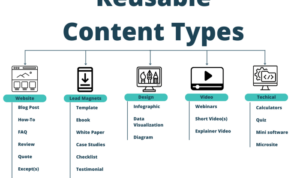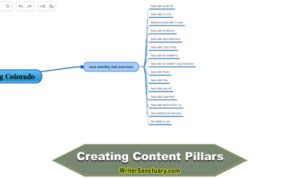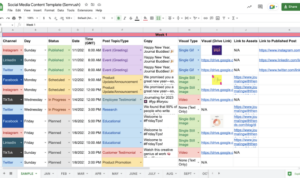Creating Monthly Content Plans kicks off the strategic approach to content creation, ensuring consistency and organization for businesses. Dive into the key elements and strategies for effective planning.
Importance of Monthly Content Plans
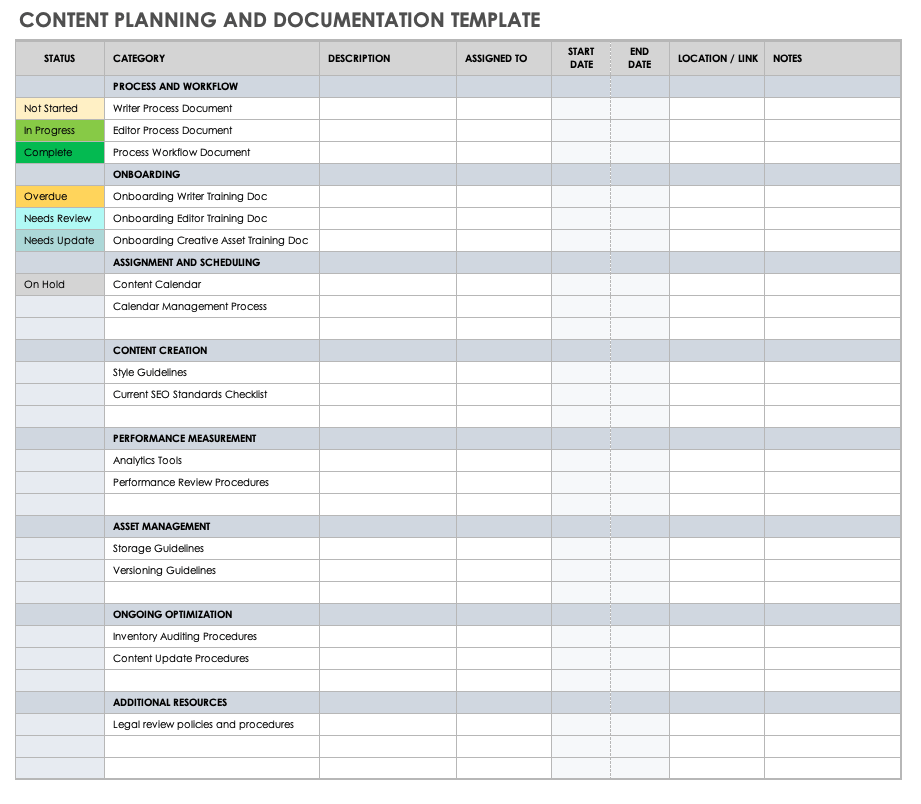
Creating monthly content plans is like having a roadmap for your business’s online presence. It lays out a clear strategy for what content needs to be created, when it will be published, and how it aligns with your overall marketing goals.
Benefits of Having a Structured Content Plan
Having a structured content plan in place offers numerous benefits for businesses:
- Consistency: By planning your content in advance, you can ensure a consistent flow of information for your audience, which helps build trust and credibility.
- Efficiency: With a structured plan, you can streamline your content creation process, saving time and resources in the long run.
- Alignment with Goals: Content plans help you align your content with your business goals, ensuring that every piece of content serves a specific purpose.
- Improved : Consistent and strategic content creation can boost your website’s search engine rankings, driving more organic traffic to your site.
How Monthly Content Plans Contribute to Consistency and Organization
Monthly content plans contribute to consistency and organization in content creation by:
- Setting Clear Goals: By outlining your content objectives for the month, you can stay focused on creating content that aligns with your overall marketing strategy.
- Editorial Calendar: A monthly content plan helps you create an editorial calendar, ensuring that you have a clear schedule for when each piece of content will be published.
- Team Collaboration: With a structured plan in place, your team can work together more efficiently, knowing what content needs to be created and when it needs to be completed.
- Adaptability: Monthly content plans allow for flexibility in content creation, giving you the ability to adjust your strategy based on real-time data and feedback.
Components of a Strong Monthly Content Plan
Creating a strong monthly content plan involves incorporating key elements that will guide your content strategy effectively. By setting clear goals and objectives for each month and considering different types of content, such as blogs, videos, and social media posts, you can ensure a well-rounded and engaging plan.
Setting Clear Goals and Objectives
Setting clear goals and objectives for each month is essential to the success of your content plan. This involves defining what you want to achieve with your content, whether it’s increasing brand awareness, driving website traffic, or generating leads. By establishing specific, measurable, achievable, relevant, and time-bound (SMART) goals, you can track your progress and ensure that your content is aligned with your overall business objectives.
- Define specific goals for each month, such as increasing social media engagement by 20% or driving 500 new leads to your website.
- Set measurable objectives that allow you to track your progress and determine the success of your content efforts.
- Ensure that your goals are achievable within the timeframe of a month and relevant to your overall business objectives.
- Establish a timeline for each goal to ensure that you stay on track and can make adjustments as needed.
Considering Different Types of Content
When creating a monthly content plan, it’s important to consider the different types of content that will resonate with your target audience. This includes a mix of blogs, videos, social media posts, infographics, and more. By diversifying your content, you can reach a wider audience and keep them engaged with your brand.
- Create a content calendar that includes a variety of content types to keep your audience interested and engaged.
- Utilize different platforms, such as your website, social media channels, and email newsletters, to distribute your content effectively.
- Experiment with different content formats, such as how-to guides, case studies, and interviews, to keep your content fresh and engaging.
- Monitor the performance of each content type to determine what resonates best with your audience and adjust your plan accordingly.
Strategies for Brainstorming Content Ideas
Brainstorming new and creative content ideas is crucial for keeping your monthly content plan fresh and engaging. Understanding your target audience is key in this process, as it helps tailor your content to meet their needs and interests. Leveraging tools and resources can also enhance your brainstorming efforts by providing insights and inspiration.
Effective Methods for Generating Ideas
- Hold brainstorming sessions with team members to bounce ideas off each other and collaborate on new concepts.
- Conduct surveys or polls to gather feedback directly from your audience on what type of content they would like to see.
- Look at trending topics in your industry or niche to stay relevant and capitalize on popular themes.
Importance of Understanding the Target Audience
Knowing your target audience allows you to create content that resonates with them, increasing engagement and driving conversions. Consider factors like demographics, interests, and pain points when brainstorming ideas.
Leveraging Tools and Resources, Creating Monthly Content Plans
Tools like Google Analytics, social media insights, and content planning platforms can provide valuable data to guide your content brainstorming process.
Utilize research tools to identify popular search terms and topics related to your industry. Additionally, content curation tools can help discover relevant content that sparks new ideas for your own content.
Creating a Content Calendar
When it comes to creating a content calendar for monthly planning, there are several steps you can follow to ensure a smooth and organized process.
Step 1: Establish Your Goals
Before diving into creating a content calendar, it’s essential to establish your goals and objectives. Determine what you want to achieve with your content and how it aligns with your overall marketing strategy.
Step 2: Identify Key Dates and Events
Take note of important dates, holidays, or events that are relevant to your audience or industry. This will help you plan content around these occasions and ensure timely and engaging posts.
Step 3: Determine Frequency and Timing
Decide how often you want to publish content and at what times. Consider your audience’s behavior and preferences to schedule posts when they are most likely to engage with your content.
Step 4: Create a Content Calendar Template
Use a spreadsheet or online tool to create a content calendar template. Include columns for dates, content ideas, s, and any other relevant information to keep track of your content planning.
Step 5: Allocate Content Ideas
Assign specific content ideas to dates and times in your calendar based on your content strategy and goals. Make sure to balance different types of content and topics throughout the month.
Step 6: Maintain Flexibility
While it’s important to stick to your content calendar, it’s also crucial to remain flexible. Be prepared to adapt to changes, new trends, or opportunities that may arise throughout the month.
Content Creation Workflow: Creating Monthly Content Plans
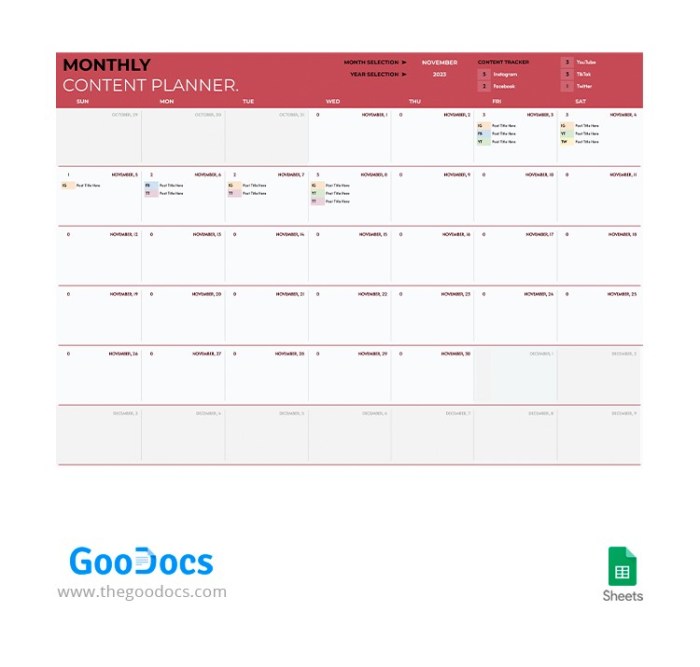
In order to efficiently create content based on the monthly plan, it is essential to establish a structured workflow that ensures tasks are assigned, deadlines are set, and team collaboration is seamless.
Task Assignment and Deadlines
Assigning tasks to team members should be done based on their strengths and expertise. Clearly define responsibilities, deadlines, and expectations for each task. Utilize project management tools like Asana, Trello, or Jira to keep track of assignments and deadlines. Regular check-ins and updates are crucial to ensure tasks are completed on time.
Collaboration with Team Members
Effective collaboration is key to successful content creation. Encourage open communication, brainstorming sessions, and feedback loops within the team. Utilize collaboration tools like Google Docs, Slack, or Microsoft Teams to facilitate communication and sharing of ideas. Regular team meetings or video conferences can help align everyone on the content strategy and progress.
Tools for Streamlining Content Creation
There are several tools and software that can streamline the content creation process. Content management systems like WordPress, HubSpot, or Drupal can help with content creation, editing, and publishing. Design tools like Canva, Adobe Creative Suite, or Piktochart can assist with creating visually appealing content. Social media scheduling tools like Buffer, Hootsuite, or Sprout Social can help in planning and publishing content across various platforms efficiently.







